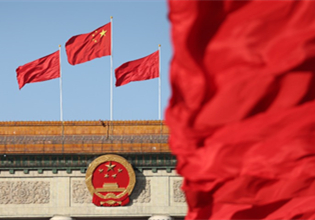Ancient methods guard high-tech zone
A group of soldiers from the Siziwang Banner border defense force patrolled on horseback to guarantee the security of the landing area for the Shenzhou-XI spacecraft on Nov 10.
 |
|
Soldiers from the Siziwang Banner border defense force ride on horseback to patrol the landing area for the Shenzhou-XI spacecraft on Nov 10. [Photo/nmgnews.com.cn] |
Attached to the Ulanqab public security department, the Siziwang Banner border defense force sent out soldiers to inspect hills, grasslands, and exit-entry border areas near the landing zone for the Shenzhou-XI spacecraft.
Due in large part to the complicated topography and landforms of the area, horses are used by patrols to go places where trucks or other vehicles would get bogged down. This is also in alignment with the long-held traditions and values of the local Mongolian ethnic groups who still regularly use horses to get around, and thus large numbers of horses are available to the local guard forces.
 |
|
Soldiers from the Siziwang Banner border defense force ride on horseback to patrol areas that would be largely inaccessible by car or truck. Local Mongolian ethnic groups still use horses on a daily basis for the same reasons, which means there is an abundance of horses for the guards to ride. [Photo/nmgnews.com.cn] |
The Shenzhou-XI manned spacecraft was sent skyward at 7:30 am atop a Long March 2F rocket from the Jiuquan Satellite Launch Center in Northwest China on Oct 17, carrying two astronauts — 49-year-old Jing Haipeng and 37-year-old Chen Dong — to the Tiangong-II space laboratory. It will descend to Earth in Siziwang Banner on Nov 18 after 33 days in space.
Subordinate to Ulanqab, Siziwang Banner houses a population of 210,000 (as of 2008) and has a land of 25,516 square kilometers. The banner is adjacent to Mongolia to the north, a boundary line stretching 104 kilometers.



 Print
Print Mail
Mail





